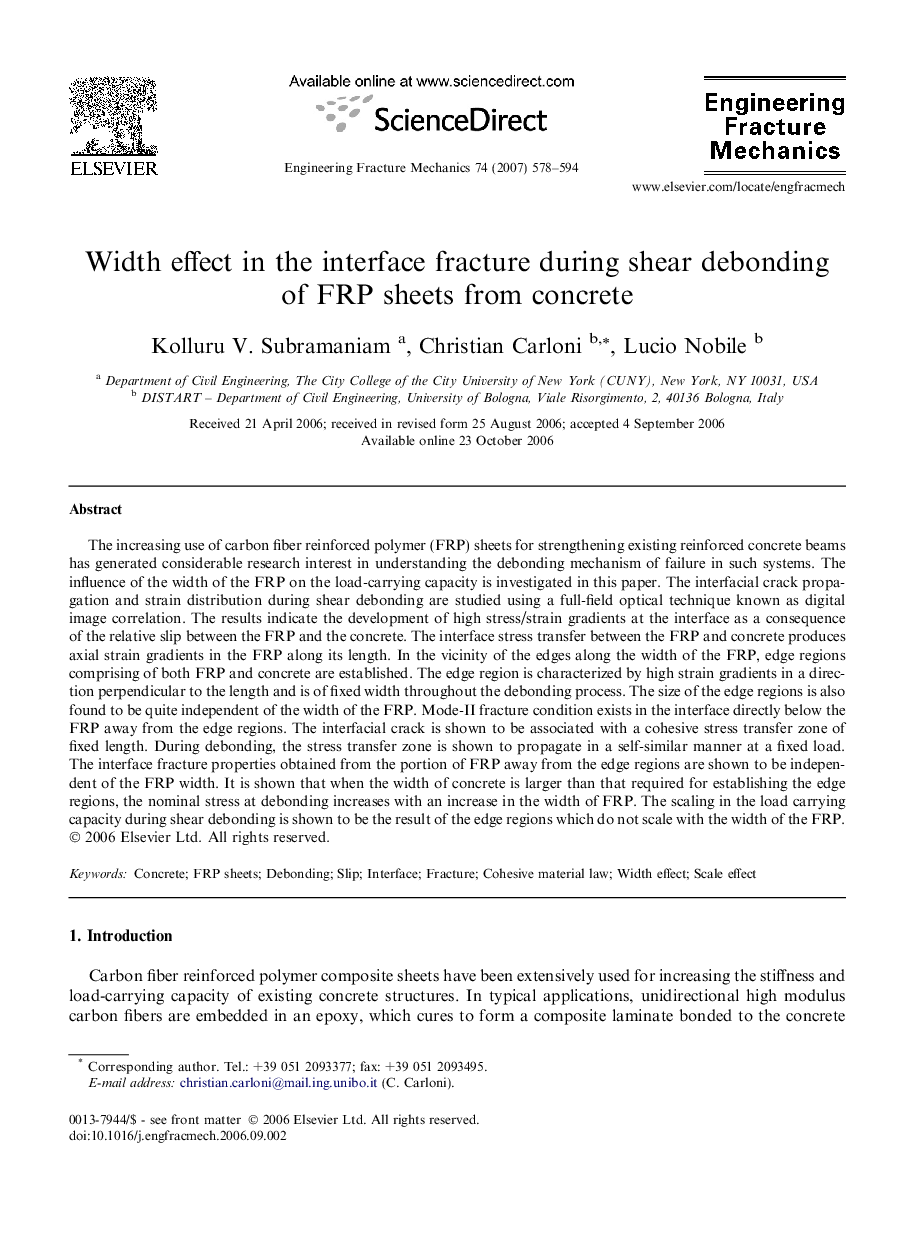| Article ID | Journal | Published Year | Pages | File Type |
|---|---|---|---|---|
| 775854 | Engineering Fracture Mechanics | 2007 | 17 Pages |
The increasing use of carbon fiber reinforced polymer (FRP) sheets for strengthening existing reinforced concrete beams has generated considerable research interest in understanding the debonding mechanism of failure in such systems. The influence of the width of the FRP on the load-carrying capacity is investigated in this paper. The interfacial crack propagation and strain distribution during shear debonding are studied using a full-field optical technique known as digital image correlation. The results indicate the development of high stress/strain gradients at the interface as a consequence of the relative slip between the FRP and the concrete. The interface stress transfer between the FRP and concrete produces axial strain gradients in the FRP along its length. In the vicinity of the edges along the width of the FRP, edge regions comprising of both FRP and concrete are established. The edge region is characterized by high strain gradients in a direction perpendicular to the length and is of fixed width throughout the debonding process. The size of the edge regions is also found to be quite independent of the width of the FRP. Mode-II fracture condition exists in the interface directly below the FRP away from the edge regions. The interfacial crack is shown to be associated with a cohesive stress transfer zone of fixed length. During debonding, the stress transfer zone is shown to propagate in a self-similar manner at a fixed load. The interface fracture properties obtained from the portion of FRP away from the edge regions are shown to be independent of the FRP width. It is shown that when the width of concrete is larger than that required for establishing the edge regions, the nominal stress at debonding increases with an increase in the width of FRP. The scaling in the load carrying capacity during shear debonding is shown to be the result of the edge regions which do not scale with the width of the FRP.
